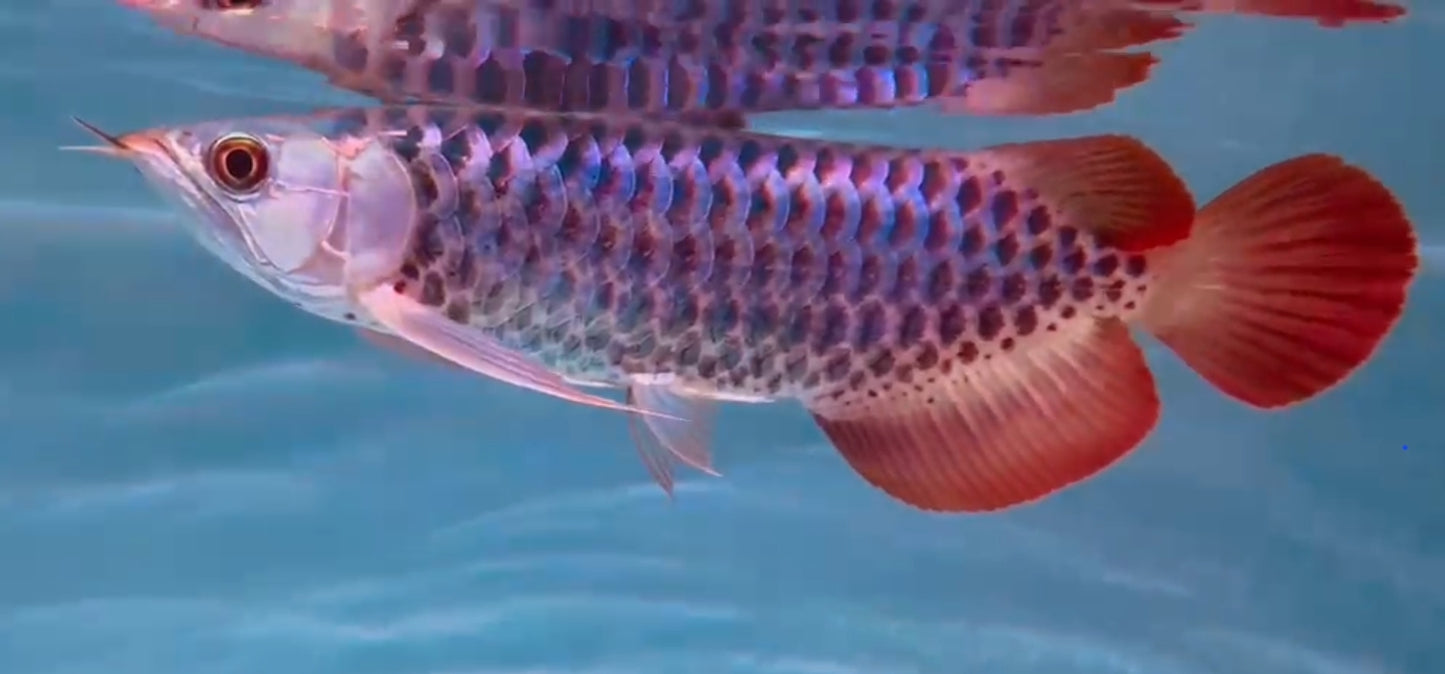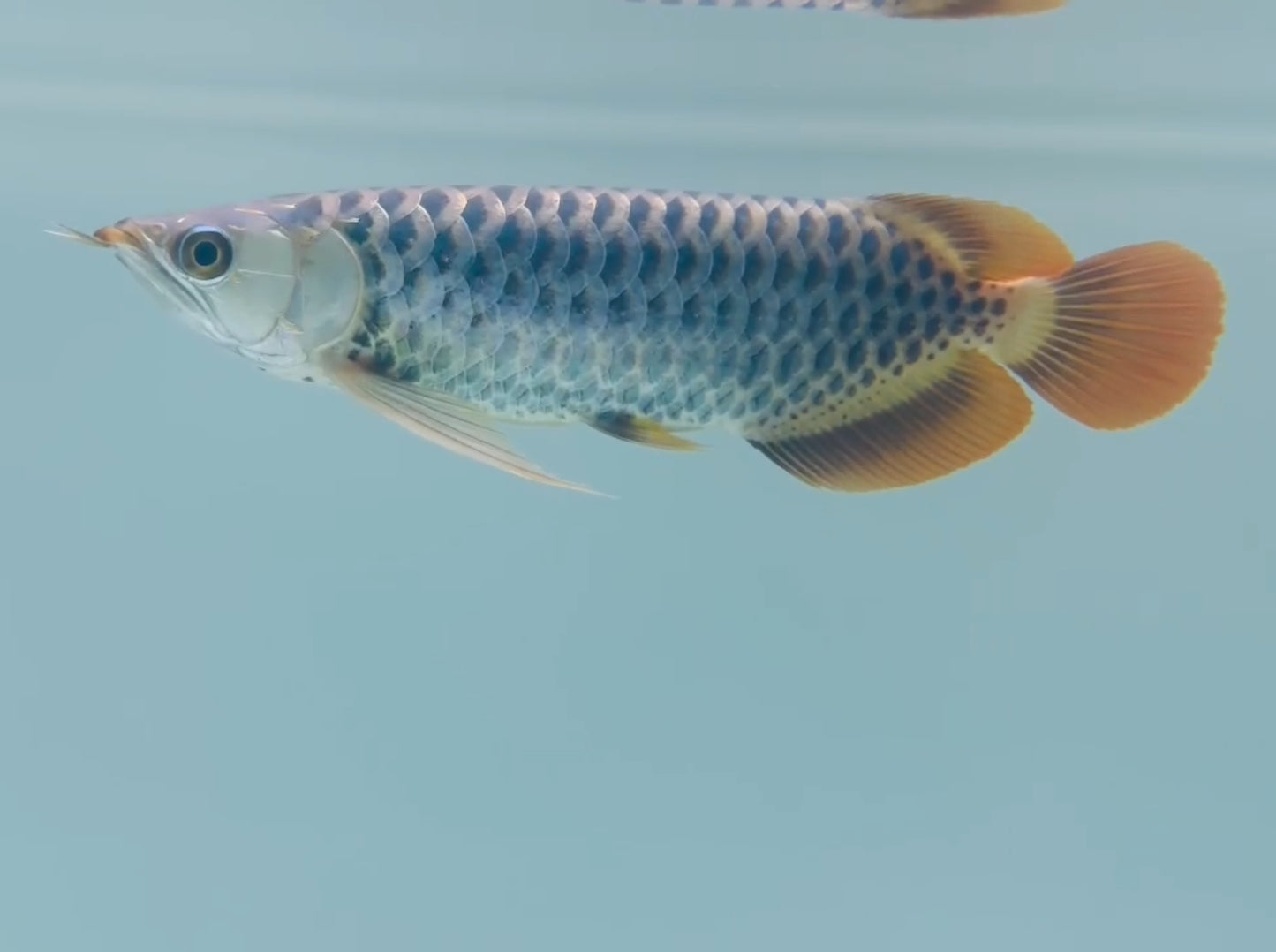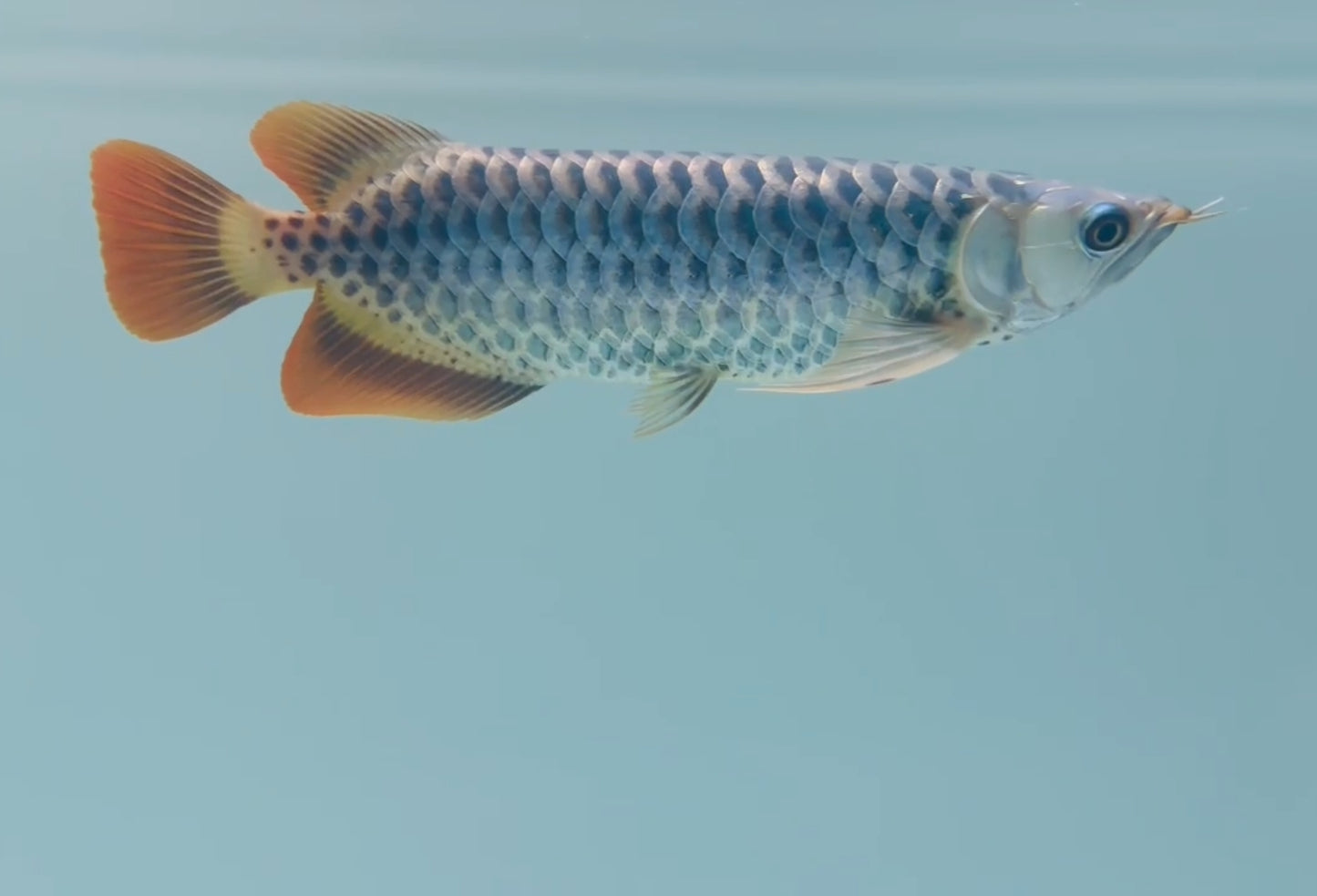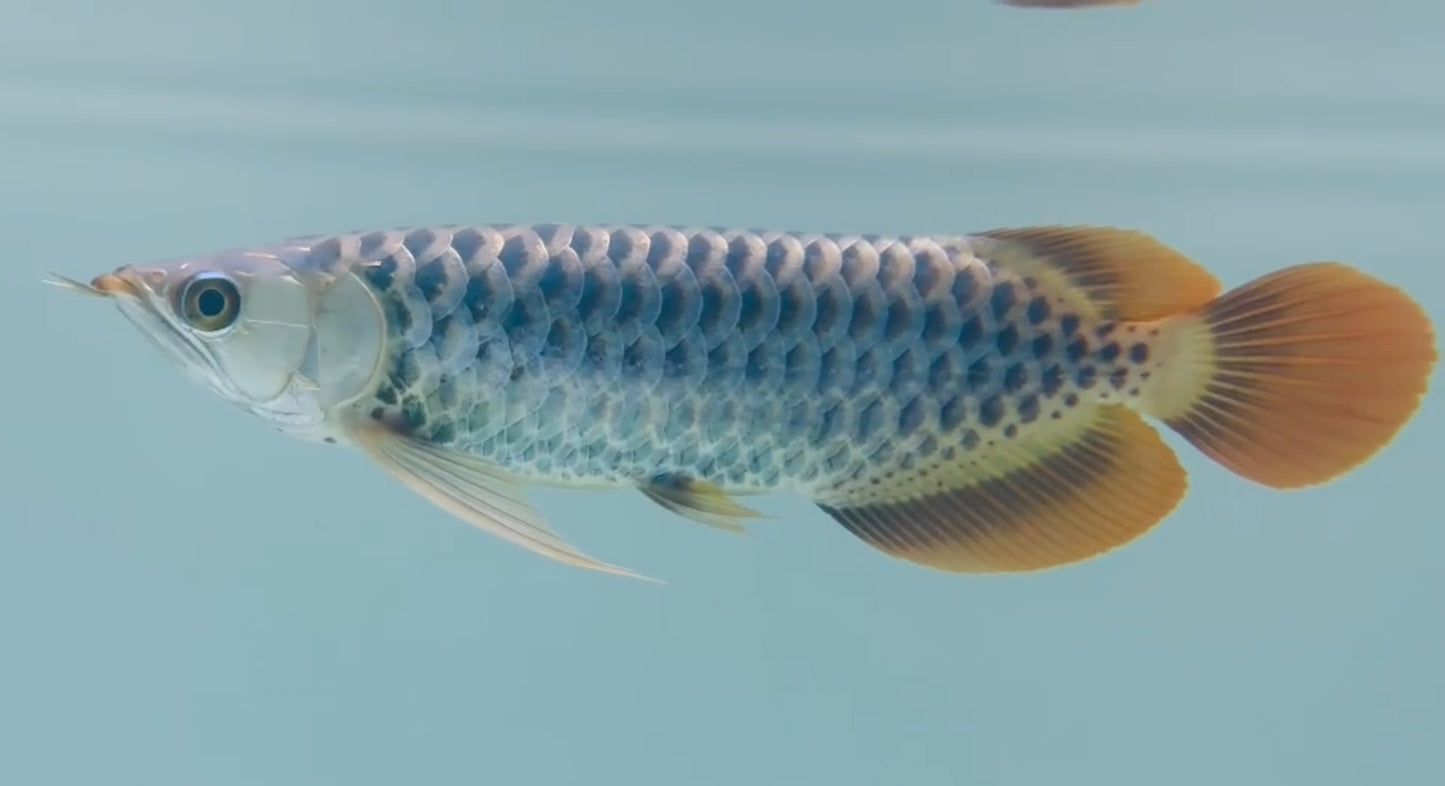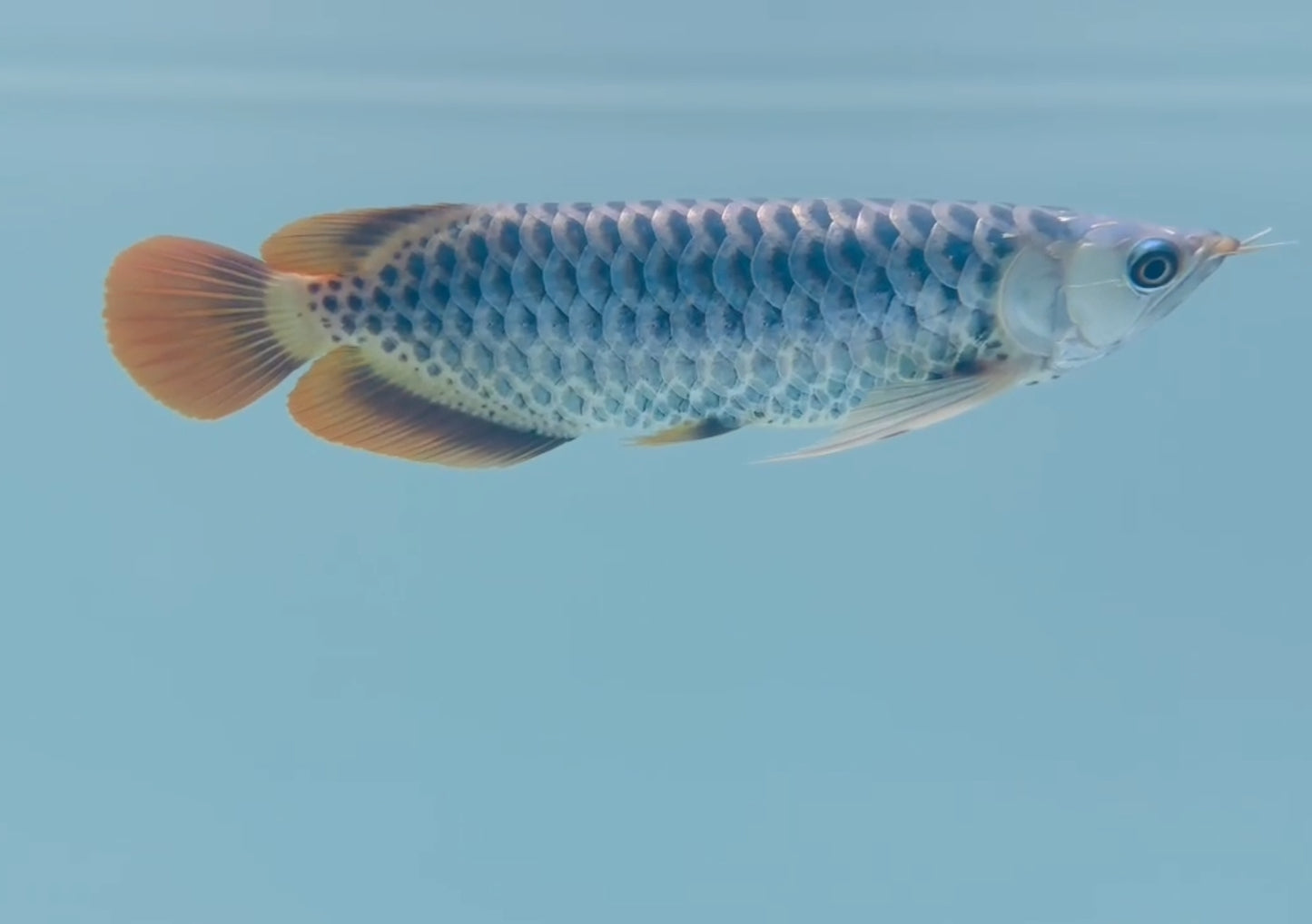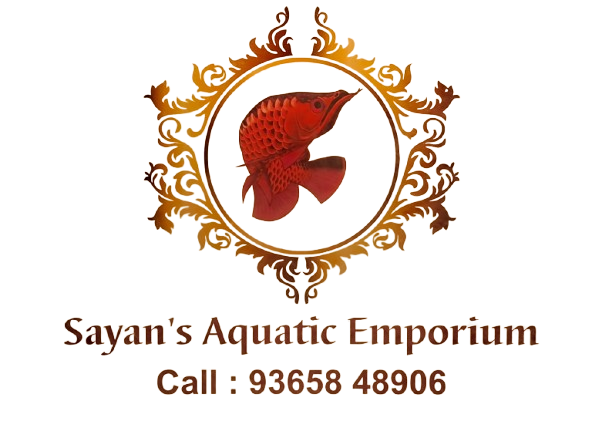1
/
of
8
SAYAN'S AQUATIC EMPORIUM
Exotic Polka Dotted Super Red Arowana
Exotic Polka Dotted Super Red Arowana
Regular price
Rs. 1,000,000.00
Regular price
Rs. 150,000.00
Sale price
Rs. 1,000,000.00
Unit price
/
per
Shipping calculated at checkout.
Couldn't load pickup availability
The Polkadot Super Red Arowana, also known as the Polkadot Crossback Super Red Arowana, is a type of Asian Arowana (Scleropages formosus) prized for its unique and striking appearance. It is characterized by a predominantly golden base color with distinctive dark spots resembling polka dots, particularly on its flanks and back. The "Crossback" refers to the coloration extending across the fish's back, a trait highly valued by collectors.
Key Features:
-
Elongated Body:Like other Arowana species, the Polkadot Crossback has a long, slender body, reminiscent of a mythical dragon, which is why it's sometimes referred to as a "dragon fish".
-
Large Scales:The fish is covered in large, shimmering scales that can appear metallic and reflective.
-
Polka Dot Pattern:The most distinguishing feature is the pattern of dark spots on the scales, often more prominent on the back and sides.
-
Crossback:A "Crossback" Arowana has the Golden & Red coloration extending across its back, a trait often associated with high quality and value.
-
Color Variations:While primarily Golden & Red, the Polkadot Crossback can have subtle variations in color intensity and spot patterns.
In aquariums:
-
High Demand:Polkadot Crossback Super Red Arowanas are highly sought after by aquarium enthusiasts, often fetching high prices due to their rarity and beauty.
-
Size:They can grow to a significant size, up to 3 feet long or more, so a spacious aquarium is necessary.
-
Aggression:Arowanas can be territorial and aggressive, particularly towards other fish, so careful tank mate selection is important.
-
Diet:They are carnivorous and enjoy a diet of live or frozen foods such as fish, shrimp, and insects.
Conservation Status: Asian Arowanas, including the Polkadot Crossback Super Red, are listed as "Least Concern" by the IUCN, but they are still protected under CITES due to their popularity in the aquarium trade and the threat of habitat loss.
Share
